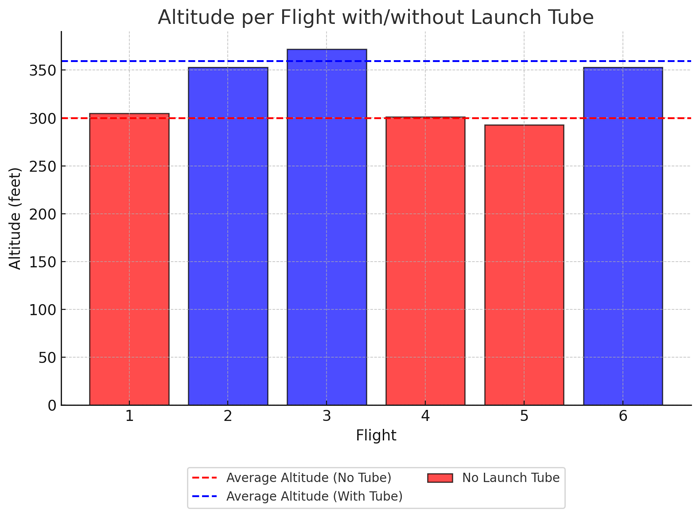| Date: | 26 October 2024 |
| Location: | Whalan Reserve, Australia |
| Conditions: | Mostly sunny, Calm 20C |
| Members: | GK and PK |
Today we continued with a set of experiments that compares rockets flown with and without launch tubes. We weren't going for maximum altitude with these flights so in order to have better chance of the rockets staying in the launch area we used our smaller Axion III rocket. We also pressurised the rocket to only 110psi to reduce the chances of explosions.
For the first launch we dialled in the pressure regulator to 110psi and left it on the same setting for all the other launches in order to get more consistent data. For each flight we carefully measured out 1L of water. We wanted to make sure that there was as little variance as possible in the parameters we could control.
The launch tube we used was 700mm long which extended for almost the entire length of the pressure chamber. This launch tube was made of two sections. The lower section used the normal PVC pipe that is 21.5 mm in diameter and fits very snugly into the nozzle of the rocket. The top part of the launch tube is made from a slightly narrower 20mm PVC pipe that extended through the tornado coupling. If the tube was tightly fitted through the tornado coupling, then any water that made its way into the top bottle, it wouldn't be able to drain down into the lower bottle.
All the flights went well with the rocket landing safely each time. The altimeter data was also quite consistent which was good to see and gave us confidence in the data that we were seeing. We used 4 second parachute delay for the deployment mechanism to make sure the parachute was deployed past apogee to allow the rocket to reach peak altitude.
Here are the results of the flights:
All flights used 110psi, and 1L of water.
| Flight | Launch Tube | Altitude (feet) |
| 1 | No | 305 |
| 2 | Yes | 353 |
| 3 | Yes | 372 |
| 4 | No | 301 |
| 5 | No | 293 |
| 6 | Yes | 353 |

The average altitude without a launch tube was: 299.6 feet while the average altitude with the launch tube was 359.3 feet. This was a percentage gain in altitude of 19.9%.
We then put the rocket data into a simulator to compare the results and here are those results.
Rocket:
Weight: 417grams
Width: 90mm
Nozzle: 21.5mm
volume: 3330mL
Water fill: 1L
Drag coefficient: 0.5
Launcher:
110psi
Launch tube: 21mm diameter, 700mm long.
The simulator predicted an altitude of 280 feet without a launch tube and 360 feet with a launch tube. That was bang on what we measured as the average altitude for the launch tube. The 280 feet was ~20 feet lower than what the simulator predicted. This may partly be result of the estimated drag coefficient for the rocket.
| Launch | Details | ||||||||||||||||||||||||
| 1 |
|
||||||||||||||||||||||||
| 2 |
|
||||||||||||||||||||||||
| 3 |
|
||||||||||||||||||||||||
| 4 |
|
||||||||||||||||||||||||
| 5 |
|
||||||||||||||||||||||||
| 6 |
|
||||||||||||||||||||||||
| 7 |
|